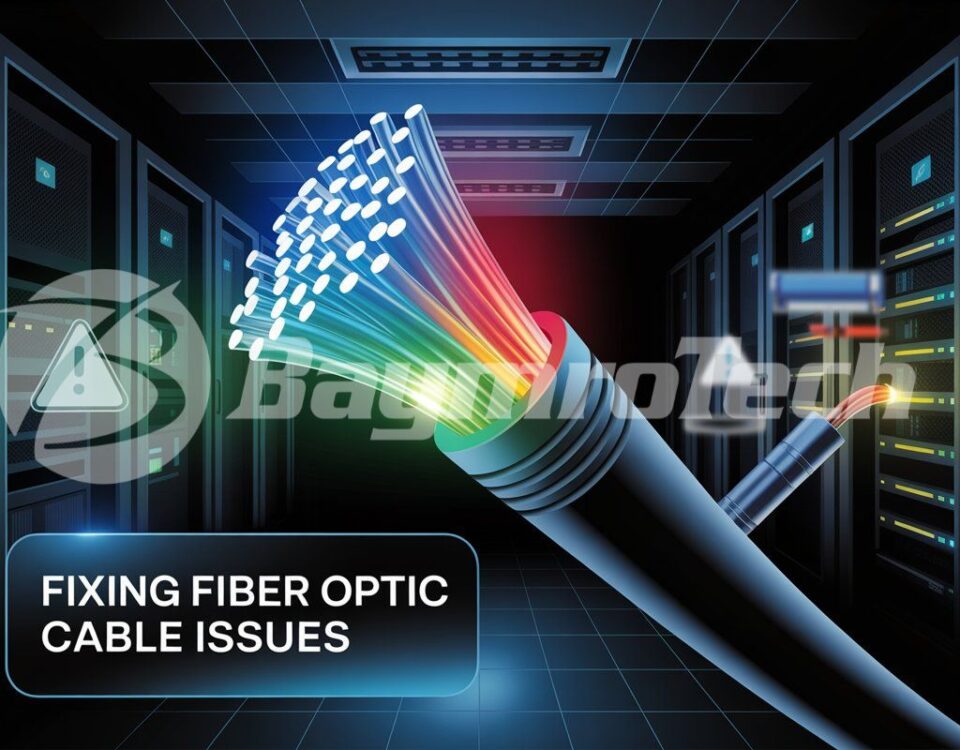Ever had your network go down right when you needed it most? Maybe it was during a crucial video call, or just as you were about to send that all-important file. If you rely on fiber optic connectivity, you know how frustrating—even costly—network downtime can be. But here’s the good news: most fiber optic issues are preventable or fixable with the right troubleshooting know-how. Let’s dive into practical tips that’ll help you keep your fiber network humming and your downtime to an absolute minimum.
Why Fiber Optic Downtime Happens (And Why It Matters)
Fiber optic networks are the backbone of modern industry, prized for their blazing speeds and reliability. But they’re not invincible. From signal loss to physical cable damage, even a tiny issue can bring your operations to a halt12. And when every second of downtime means lost productivity (and sometimes lost revenue), knowing how to troubleshoot quickly is a superpower.
Common Causes of Fiber Optic Network Downtime
Before you can fix a problem, you need to know what you’re up against. Here are the usual suspects:
- Signal Attenuation: As light travels through the fiber, it weakens. Causes include bends, impurities, or even tiny scratches on the cable12.
- Contamination: Dust or dirt on connectors can disrupt the signal. Even a fingerprint can cause trouble1.
- Physical Damage: Fiber cables are tough, but not invincible. Bends, breaks, or kinks can stop data in its tracks12.
- Faulty Connections: Loose or mismatched connectors, or a worn-out fiber optic adapter, can cause intermittent or total loss of connectivity14.
- Equipment Issues: Routers, switches, or transceivers sometimes fail or need a reboot2.
- Environmental Factors: Extreme temperatures or moisture can degrade cable integrity2.


Step-by-Step: Troubleshooting Fiber Optic Downtime
Let’s break down a systematic approach to getting your network back online:
1. Identify the Problem Area
Start by gathering intel:
- Is the issue affecting one device, a section, or the whole network?
- Check your network topology and recent changes—sometimes the culprit is a new installation or a recent move1.
2. Inspect Physical Connections
- Check Cables: Look for visible damage, sharp bends, or kinks.
- Examine Connectors: Unplug and inspect for dirt, dust, or scratches. Clean connectors with a proper fiber cleaning kit—never use your shirt sleeve!
- Test Adapters: A faulty fiber optic adapter can be the hidden villain. Swap with a known-good adapter to rule this out4.
3. Test and Measure
- Use Diagnostic Tools: Tools like visual fault locators, optical time domain reflectometers (OTDR), and power meters can pinpoint where the signal drops1.
- Check Signal Levels: Compare readings to manufacturer specs. High loss? You’ve found your problem area.
4. Address the Issue
- Clean and Reconnect: If contamination is found, clean and reconnect.
- Replace Damaged Components: Swap out damaged cables, connectors, or adapters.
- Reboot Equipment: Sometimes a simple power cycle on your switches or routers does the trick2.
5. Test Again
After repairs, retest the network. Make sure signal strength and data rates are back to normal. Document the fix for future reference—your future self will thank you!
Pro Tips for Preventing Future Downtime
- Handle Cables with Care: Avoid sharp bends and pulling on cables. Use bend-insensitive fibers where possible12.
- Keep It Clean: Regularly inspect and clean connectors and adapters.
- Choose Quality Components: Not all fiber optic adapters are created equal. Look for ceramic sleeves and low insertion loss (ideally under 0.2dB) for best performance4.
- Regular Maintenance: Schedule periodic inspections and tests, even if everything seems fine.
Real-World Example: When a Tiny Bend Stopped a Factory
A manufacturing plant recently experienced repeated network outages. After hours of head-scratching, the culprit was found: a fiber cable had been bent sharply behind a server rack during routine cleaning. The fix? Re-routing the cable and using a new, high-quality fiber optic adapter. Downtime dropped to zero, and the IT team became instant heroes.
Fiber Optic Adapter: The Unsung Hero
Let’s give a quick shout-out to the fiber optic adapter. This tiny component connects your cables and keeps data flowing smoothly. If you’re troubleshooting connectivity issues, don’t overlook it—a worn or poor-quality adapter can cause mysterious losses or intermittent problems4. When choosing a replacement, opt for one with a ceramic sleeve and high durability to ensure a tight, reliable connection.
Want More Fiber Optic Know-How?
- Check out our guide on Fiber Optic Connectors Explained for a deeper dive into the components that keep your network running.
- Learn how MPO/MTP Solutions can future-proof your high-density network.
Trusted Resources for Further Reading
- For an expert guide to troubleshooting, see this fiber optic troubleshooting overview.
- Learn more about common fiber internet problems and solutions.
- Understand the importance of choosing the right fiber optic adapter.
Wrapping Up: Stay Connected, Stay Confident
Network downtime doesn’t have to be a mystery or a nightmare. With a little know-how and a systematic approach, you can troubleshoot most fiber optic issues quickly and confidently. Remember to handle your cables gently, keep connectors clean, and invest in quality components like the right fiber optic adapter. Got a question or a troubleshooting tip of your own? Drop a comment below, or contact our team for expert help. Your network—and your peace of mind—will thank you.




